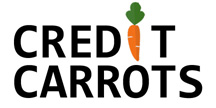“All-in-one” exchange-traded funds (ETF’s) have become very popular – and for good reason. They allow you to get exposure to a wide variety of stocks and bonds for your investment portfolio by simply buying a single low-cost ETF.
Two of the most popular all-in-one ETF’s in recent years are offered by iShares and Vanguard. iShares offers the highly respected XGRO ETF while Vanguard offers the excellent VGRO ETF. Both are good choices, and people often have trouble deciding which one to buy. If you’re in a rush, here is our recommendation:
TL;DR: XGRO is better than VGRO.
Read on to find out why like XGRO more! But first, a bit of background on both funds.
XGRO Versus VGRO
XGRO is the iShares Core Growth Portfolio, which provides exposure to a wide range of stocks and bonds. This fund buys and holds other funds, which in turn hold the individual stocks and bonds. By simply buying XGRO, you’re gaining exposure to thousands of stocks and bonds. The management expense ratio for owning this fund is only 0.20%! If we’re looking at dollar values, this fund is about 80% stocks and 20% bonds – which makes it fairly growth-focused.
VGRO is the Vanguard Growth ETF Portfolio which also provides broad exposure to stocks and bonds. This fund holds over 12,000 stocks and and over 16,000 bonds through buying funds – much like XGRO. The management expense ratio is low at around 0.25%. If we’re looking at dollar values, this fund is about 80% stocks and 20% bonds – which makes it growth-focused as well.
Differences Between XGRO and VGRO

Now, both XGRO and VGRO are excellent ETF’s with many similarities. However, there are some differences:
- XGRO holds about 38% of their portfolio in US stocks while VGRO holds about 34%. This means that if the US market goes up, you will benefit more from XGRO.
- XGRO holds about 19% of their portfolio in Canadian stocks while VGRO holds about 24%. This means that if the Canadian market goes up, you will benefit more from VGRO.
- XGRO has a lower management fee than VGRO. XGRO’s management expense ratio clocks in at around 0.20% while VGRO has an expense ratio of roughly 0.25%.
- VGRO holds about 5% in bonds outside of the United States. This means that VGRO gives better global bond exposure than XGRO. If Asian and European bond prices go up, you will benefit more from VGRO.
- VGRO is a bigger fund with over 1 billion dollars under management. XGRO is about half the size at around 400 million dollars. Even though XGRO is smaller than VGRO, 400 million dollars is nothing to sneeze at, and you should typically not run into any issues when you want to buy or sell either ETF.
- Depending on where you buy your investments, some brokers don’t do an “auto-buy” plan for the Vanguard ETF’s. This means that if you want to buy into VGRO on regular intervals you may have to do it manually. iShares ETF’s should all be eligible for auto-buy in Canada.
Even with the differences, you really can’t go wrong buying either of these funds.
Should you buy XGRO or VGRO?
We would go with XGRO.
The reason we like XGRO more is that the US stock market has traditionally outperformed the Canadian stock market, and XGRO holds more US stocks than VGRO. Also, the slightly lower management fee for XGRO doesn’t hurt either.
We are not financial advisors, and no content on this site should not be taken as financial advice. No guarantee can be made if you invest based on the information provided on this blog. We make no warranty of any kind regarding the blog and/or any content, data, materials, information, products or services provided on the blog.












Article Comments